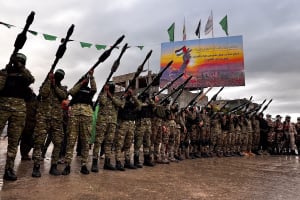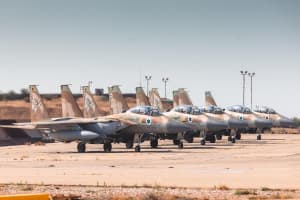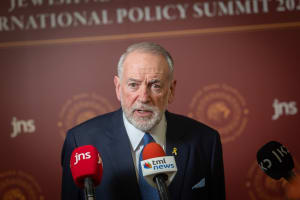IDF ramps up pressure in Rafah in strategy to return Hamas to negotiations
Military expands Morag Corridor as it cuts Gaza into separate areas of conflict

Israel Defense Forces continues to expand the newly established Morag Corridor between Rafah and Khan Younis, as it attempts to separate the Hamas forces in both cities, allowing the military to destroy each formation separately.
The Morag Corridor, like the Netzarim Corridor, is named after a former Jewish settlement in Gaza. Similar to the Netzarim Corridor, its strategic purpose is to divide Gaza into separate sections, enabling the IDF to concentrate its operations in one area while limiting Hamas' ability to move fighters or supplies between regions.
The military is expanding the Morag Corridor and even paving parts of the almost 12-kilometer (7.5-mile) road. Like the Netzarim Corridor, the IDF is establishing outposts along the corridor and increasing traffic in order to prevent Hamas' attempts to resupply the severed region.
According to a briefing given to Israeli journalists touring Rafah, the IDF estimates that Hamas has around two battalions in Rafah, however, those are not complete battalions. While the military would not give an exact figure, it believes the number of Hamas fighters in Rafah is in the dozens.
The IDF’s Gaza Division is currently operating in Rafah, working to locate and destroy Hamas infrastructure and eliminate any terrorists it encounters.
IDF Brig.-Gen. Barak Hiram, the division commander, told reporters that the mission is to capture and clear all of Rafah.
“The mission was to conquer all of Rafah and destroy all the terrorists here, and capture the entire territory of the Rafah Brigade,” Hiram said.
The IDF noted that there have been few clashes in the area of the Philadelphi Corridor and Rafah. The military believes that Hamas is focused on maintaining power and now only launches attacks with a high chance of success.
Due to the encirclement of Rafah, which prevents the terrorists there from fleeing northward, the IDF estimates there is a high chance of clashes in the coming days as the forces continue to sweep the city.
During the operation in Rafah so far, about 30 Hamas operatives have been detained and taken for interrogation by security forces. So far, the Hamas operatives have largely resorted to sniper attacks, placing IEDs, or launching RPGs at military vehicles.
Currently, the IDF's operations on the ground focus on improving defense, creating a buffer zone, and continuing to push back the enemy, which has already retreated in several areas.
The military also hopes that the increased pressure on Hamas, including continued strikes on commanders and officers, and the lack of humanitarian aid into the Strip, will stir up dissent from the local Palestinian population against the terror organization.
The military has previously provided evidence that Hamas has confiscated significant amounts of the humanitarian aid sent into the Gaza Strip during the hostage-ceasefire deal, at the expense of the civilian population. The lack of access to aid and the levels of destruction in Gaza have already led to several protests against Hamas, and even incidents of Gaza residents killing Hamas members in frustration at the terror group’s harsh treatment of the civilian population.
According to IDF officials who spoke with Ynet News, the military has not ruled out the possibility that it will directly distribute aid to Gaza civilians.
The officials said the important thing is to make sure that humanitarian aid does not fall into Hamas' hands.
“A single aid truck can sustain an entire Hamas brigade for a month, including salaries for operatives and other resources,” officials explained.
Ultimately, the IDF said the goal of the increased pressure is not to destroy Hamas at the moment, but still to convince the terror organization to return to the negotiating table for another hostage release deal.
Recently appointed IDF Spokesman Brig.-Gen. Effie Defrin said, “Hamas is under pressure. We will pursue Hamas from wherever it operates, both in the north and south of the Gaza Strip and even outside of it, anywhere. We will not rest until we bring our hostages home, every last one of them, both alive and deceased alike.”
“The hostages are always at the forefront of our minds; this is our top priority,” Defrin said. "Every soldier here, from the division commander to the junior soldier, understands this objective.”
The spokesman also said that the level of ambiguity regarding recent IDF operations in Gaza is deliberate.
“Since the beginning of the operation [Operation Strength & Sword], we have maintained operational ambiguity. This is not just a slogan; ambiguity is part of the method, part of the operational strategy,” Defrin stated.
“We do not intend to reveal our actions to Hamas. Now that we have completed operations here, we will continue to expand our operations more and more and maintain the element of surprise.”

The All Israel News Staff is a team of journalists in Israel.
You might also like to read this:
















